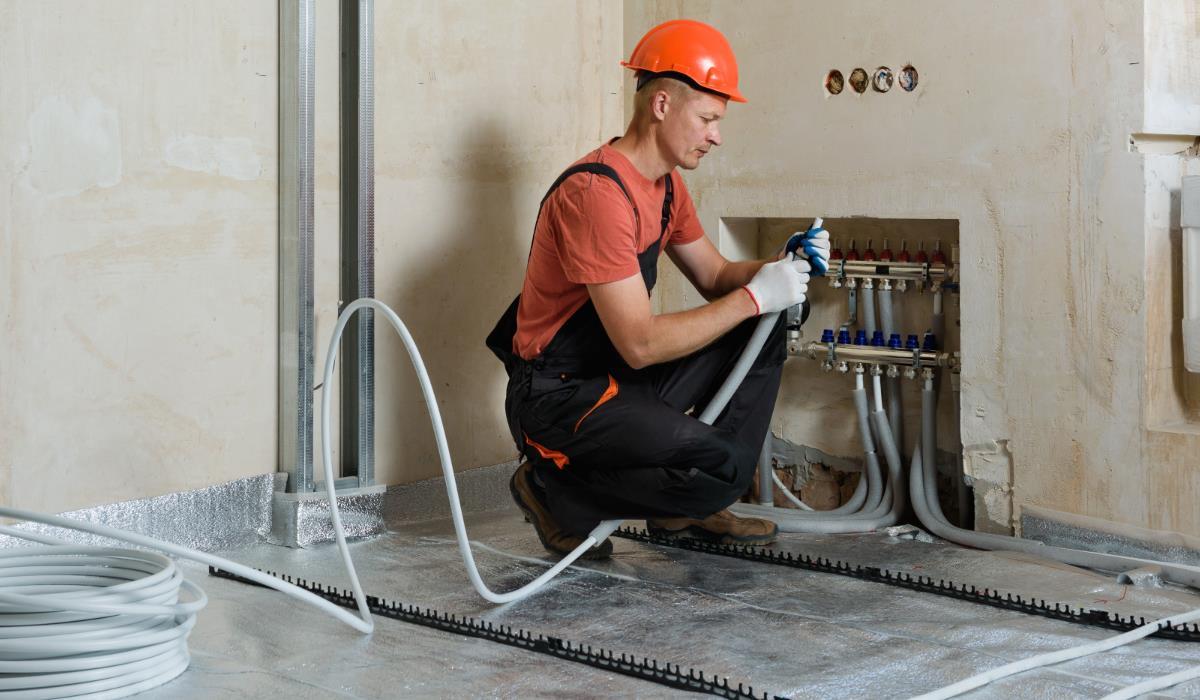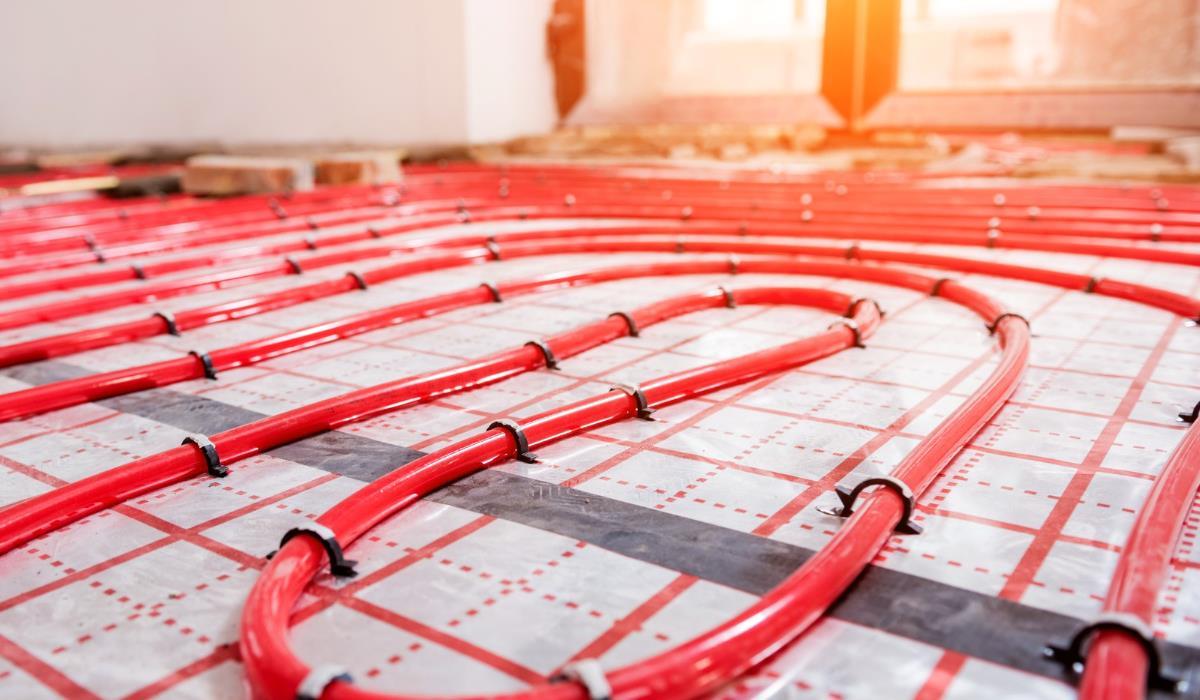Water floor heating has been one of the most popular heating systems for years. Like traditional heaters, it can be powered by boilers. However, its operation is significantly different. What exactly makes this solution different and how can we use it to our advantage?
The most popular type of underfloor heating is characterized by a simple structure. First, thermal insulation made of expanded polystyrene is applied to the floor and then covered with construction foil. Then loops of pipes are laid, fixing them with plastic clips to the ground. These pipes are then covered with a layer of floor screed, for example with a cement or anhydrite screed. The produced and properly dried screed is a strong and stable base for any type of floor.
Water floor heating – characteristics
The most characteristic feature of this heating system is the considerable thickness and mass of the screed. In the case of standard screeds, their thickness is at least 6 cm. Of which over 4 cm is above the pipes with the most popular diameter of 16 mm. As a result, 1 m2 of such a screed weighs at least 120 kg, and in a small room of 10 m2 even 1200 kg – as much as a car. This explains why in many old houses, especially during renovation, such a floor cannot be used on the ceilings. By the way, even in newly built houses, the consent of the builder is required.
Lightweight flooring systems are a special case. They consist of special polystyrene boards with milled recesses for laying pipes, as well as the so-called. dry screed, i.e. relatively light fiber cement or gypsum fiber boards.
Water underfloor heating – installation and use

These systems are mainly used in renovated houses, as well as in wooden ones, whose ceilings cannot withstand the traditional, heavy heating floor. Compared to typical underfloor heating, they are much lighter and thinner, and their installation does not require the so-called wet works. Dry screed boards are usually laid in two layers, fixed with screws and glue in staggered joints. After one day, you can usually walk on them and start finishing the floor, e.g. with ceramic tiles, panels or a thin carpet.
Thermal accumulation and inertia are key concepts related to the operation of this type of heating. The great weight of a typical floor screed means that underfloor heating heats up slowly and cools down just as long after the hot water supply is turned off. This is an important aspect of designing a heating system to take advantage of the advantages of this solution and minimize its disadvantages.



